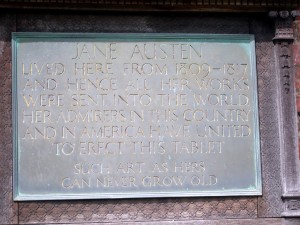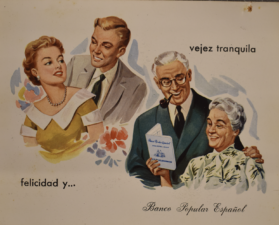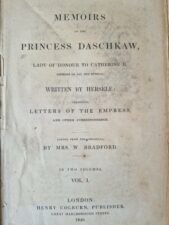
Photo: robin Joyce
Robin Joyce
Part 1
Jane Austen, was indeed, a troublesome writer. Troublesome for whom? Although the historical context in which she wrote has some relevance, Austen is often troublesome in a way that reflects feminist writing since the 1970s. She is quintessentially an observer of her society. She asks difficult questions about what she observes and produces confronting writing based on them. Most confronting to her contemporaries and later are those she asks about the nature of marriage and its economic significance for women. In turn, the answers raised questions about women’s position. Austen was a social observer who, by interposing herself between the reader and the narrative, used her authorial voice to emphasise particular points or debates about discrimination against women.
Austen’s novels establish a template for the writer who seems to conform, but in reality challenges the society in which she writes. Although her fictional accounts are the most telling, with their carefully crafted narratives and characters which embrace her observations Austen’s (Jane Austen’s Letters, 1995) and biographies provide additional evidence of the purposely troublesome nature of her work.
Gilbert and Gunbar’s suggestion that Austen used her characters’ dilemmas to explore her own problems (The Madwoman in the Attic, pp.154-155) raises the question of the links between writers’ lives and their fiction. The answer can only be speculative. Writers’ non-fictional accounts are, like their fiction, often written for the public gaze. Austen’s letters were written for a wider audience than the acknowledged recipient and many of her presumably more confidential letters were destroyed.
 Austen’s contribution to the study of marriage and economics and what it means for women is impressive. The questions she raises demonstrate that whatever the constraints, she is at heart an uncompromising woman against and within the society in which she wrote, her portrayal of women characters being influenced, but not controlled, by the cultural and social context. While writing in a landscape that included political writers such as Mary Wollstonecraft, Austen did not overtly join their cause on behalf of women. Nonetheless, her clear-eyed observation of her society is apparent through her letters, and in her fictional accounts she brings her observations to a larger audience in a more accessible form. Park Honan’s biography, Jane Austen Her Life (1997) provides an explanation of Austen’s ability to defy convention, however genteelly. Through Honan’s synthesis Austen naturally emerges as an unconventional woman whose public persona often belied that description. Honan’s work complements the representation of Austen who has been reassessed by commentators such as Gilbert and Guber (The Madwoman in the Attic, 1984).
Austen’s contribution to the study of marriage and economics and what it means for women is impressive. The questions she raises demonstrate that whatever the constraints, she is at heart an uncompromising woman against and within the society in which she wrote, her portrayal of women characters being influenced, but not controlled, by the cultural and social context. While writing in a landscape that included political writers such as Mary Wollstonecraft, Austen did not overtly join their cause on behalf of women. Nonetheless, her clear-eyed observation of her society is apparent through her letters, and in her fictional accounts she brings her observations to a larger audience in a more accessible form. Park Honan’s biography, Jane Austen Her Life (1997) provides an explanation of Austen’s ability to defy convention, however genteelly. Through Honan’s synthesis Austen naturally emerges as an unconventional woman whose public persona often belied that description. Honan’s work complements the representation of Austen who has been reassessed by commentators such as Gilbert and Guber (The Madwoman in the Attic, 1984).
Although she could be expected to approach feminism with more caution than writers from the 1970s and later, to suggest that Austen did not respond to feminist non-fiction writers such as Wollstonecraft would be to ignore an important part of the cultural landscape of the 1800s and a writer’s sensitivity to her environment. However, the extent to which this influence can be detected in simple terms is limited. After all, in the 2000s many of Austen’s women characters would be seen as little more than irksome. However, it is rare that they do not have a powerful impact on their fictional environment and other characters. Most importantly, they provide Austen’s readers with alternative views of marriage. Women as diverse as Marianne (Sense and Sensibility, 1811), Elizabeth Bennett (Pride and Prejudice, 1813), Maria Bertram and Mary Crawford (Mansfield Park, 1814), Anne Elliot and Mary Musgrove (Persuasion, 1818) and Lady Susan (Lady Susan, 1871) [1] all undermine fairy tale images of marriage.
Although recognising that all authors are subject to a variety of understandings the commentary on Austen arises in part from her gender. It is certainly her gender that has rendered descriptions of her as “a nasty old maid”, suggesting that her depictions of marriage in particular have offended. The subversive nature of Austen’s cynicism also denotes her as troublesome. One commentator considered her cynicism so radical he called Austen “the most merciless, though calmest, of iconoclasts” (Quoted in Johnson, p.49). Despite these clear indications of the challenges presented by Austen her reputation at the time was unsullied. Sales of her novels suggest that they were popular and they were widely considered suitable reading.
[1] These publication dates refer to the first publication of each of the novels. Northanger Abbey and Persuasion were published posthumously in 1818. James Edward Austen-Leigh published Lady Susan, The Watsons and Sanditon in the second edition of his Memoir of Jane Austen in 1871.
Robin Joyce is an independent scholar whose writing includes analysis of literature from a feminist perspective and research on women’s political activism.

